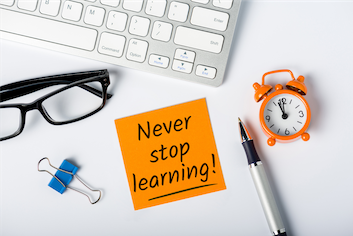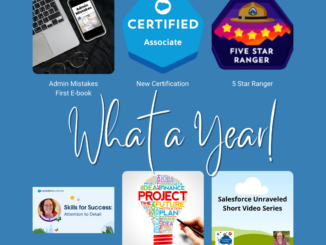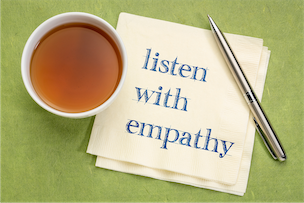In today’s ever-evolving business landscape, the successful adoption and utilization of Salesforce requires more than just initial training. Continuous learning and skill development are essential for keeping up with the latest features, best practices, and industry trends. In this blog, we will explore the importance of ongoing training and skill development, strategies for creating a culture of continuous learning, leveraging Salesforce Trailhead and other resources, and measuring the long-term impact of continuous training on Return on Investment (ROI).
The Importance of Ongoing Training and Skill Development
- Evolving Technology:
Salesforce is a dynamic platform that frequently releases updates and new features. Continuous training ensures that users are up-to-date with the latest tools and functionalities. - Changing Business Needs:
Business requirements evolve over time. Continuous learning allows organizations to adapt Salesforce to meet their changing needs effectively. - Maximizing ROI:
Investments in Salesforce can only yield maximum ROI if users are proficient in utilizing its capabilities to the fullest. Ongoing training ensures that potential benefits are realized. - Employee Engagement:
Continuous learning keeps employees engaged and motivated. It demonstrates an organization’s commitment to employee growth and development. - Competitive Edge:
In a competitive marketplace, businesses that continually invest in their employees’ skills gain a competitive edge. Continuous learners are more agile and adaptable.
With every release or sprint, training should be taken into consideration. Work with Super Users or Champions to assess the level of training required. Will email messaging be sufficient, or does the new functionality required face to face training sessions. After implementation / adoption, work with your training team to a build a BAU training program. What is the training new starters need to go through? How will be responsible to update training if functionality changes? What is the strategy to roll out regular changes and updates?

Strategies for Creating a Culture of Continuous Learning
- Leadership Support:
Leadership should champion a culture of continuous learning by actively participating in training and promoting its importance. - Clear Learning Paths:
Define clear learning paths for different roles within the organization. Tailor training to the specific needs and skill levels of different user groups. - Regular Training Sessions:
Host regular training sessions, workshops, and webinars to introduce new features and reinforce existing knowledge. - Encourage Self-Paced Learning:
Provide access to self-paced learning resources, such as Salesforce Trailhead, to encourage employees to explore topics of interest at their own pace. - Recognition and Rewards:
Recognize and reward employees who demonstrate a commitment to continuous learning. Consider certifications, badges, or other forms of recognition. - Knowledge Sharing:
Encourage knowledge sharing among employees. Peer-to-peer learning and mentoring can be invaluable.
Work with your employees to build best in class scenarios, taking other employees on the journey to reach similar level of expertise. Use team meetings and company wide meetings to reward employees, set new challenges and present road map.
Leveraging Salesforce Trailhead and Other Resources
- Salesforce Trailhead:
Salesforce Trailhead is a free, comprehensive online learning platform with modules, trails, and projects. It covers a wide range of Salesforce topics and offers hands-on experience. - Official Documentation:
Salesforce provides official documentation and release notes. Encourage users to explore these resources to stay informed about updates and changes. - Webinars and Events:
Attend Salesforce webinars, events, and conferences. These events provide insights into best practices and upcoming features. - Online Communities:
Join Salesforce online communities and forums where users discuss issues, share solutions, and learn from each other’s experiences. - External Training Providers:
Consider external training providers who specialize in Salesforce training. They often offer in-depth courses on specific topics.
For those users who want to go the extra mile, but certainly all internal stakeholders and Salesforce champions should be encouraged to regularly attend events and meetings to understand upcoming changes and learning from other businesses’ best practices. Salesforce is fast pacing changing environment and it can be a challenge to stay on top. Learning from others and knowing in advance changes that are coming can help in building a robust training plan.
Measuring the Long-Term Impact of Continuous Training on ROI
- Performance Metrics:
Track key performance metrics related to Salesforce usage, such as lead conversion rates, customer satisfaction scores, or sales revenue. Compare these metrics before and after training. - User Adoption Rates:
Measure user adoption rates to determine how effectively employees are using Salesforce in their daily tasks. - Certification and Badge Completion:
Monitor the number of certifications and badges earned by employees. This indicates their level of proficiency and commitment to continuous learning. - ROI Calculations:
Calculate the ROI of Salesforce by comparing the costs associated with the platform (licenses, training, support) to the benefits, such as increased revenue, cost savings, and improved customer retention. - Employee Feedback:
Gather feedback from employees about the impact of continuous training on their job performance and satisfaction. Use surveys or interviews to collect this data. - Case Studies:
Develop case studies that highlight specific instances where continuous training led to measurable improvements in business outcomes. These real-world examples provide concrete evidence of ROI.
Conclusion
Continuous learning is the cornerstone of Salesforce success in today’s competitive business environment. It ensures that users remain proficient in utilizing the platform’s evolving features and functionalities, ultimately maximizing Return on Investment (ROI). By creating a culture of continuous learning, leveraging resources like Salesforce Trailhead, and measuring the long-term impact of training on performance and ROI, organizations can stay ahead of the curve and reap the full benefits of Salesforce as a strategic tool for growth and success.
Investing in ongoing training and skill development is not just an expense; it’s an investment in the adaptability and resilience of your organization, enabling it to thrive in an ever-changing business landscape.
The series:
- Blog 1: “Building a Comprehensive Training Plan for Salesforce”
- Blog 2: “The Significance of a Training Needs Analysis (TNA)”
- Blog 3: “Securing Executive Buy-In for Salesforce Training”
- Blog 4: “Embracing Change Management in Salesforce Training”
- Blog 5: “Comparing Training Solutions: Face-to-Face vs. Video vs. E-Learning”
- Blog 6: “Effective Training Delivery: Tips and Best Practices”
- Blog 7: “Leveraging Gamification for Salesforce Training Success”
- Blog 8: “The Role of Continuous Learning in Salesforce Success”
- Blog 9: “Overcoming Common Salesforce Adoption Challenges”
- Blog 10: “Future Trends in Salesforce Training and User Adoption”




Be the first to comment